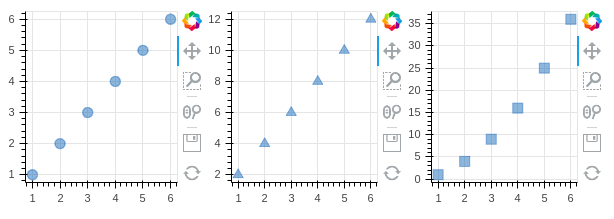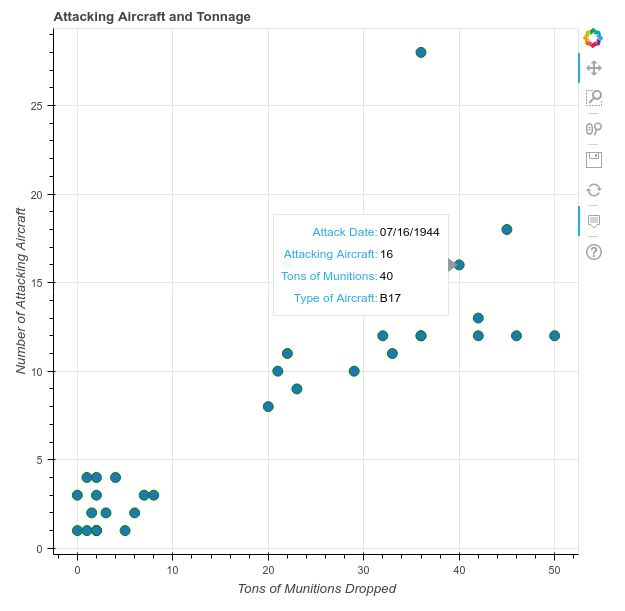

#Bokeh python example series
In a previous series of posts on exploratory data analysis (EDA) - EDA 1, EDAĢ, EDA 3 and EDA 4, we have covered static plotting in python using major Unearth their own insights: findings they consider relevant or interesting.” Into a dataset or subject matter… they facilitate the user exploring the data, letting them Exploratory visualizations, “create an interface

Start out with a hypothesis or question, or you may just really be delving into the data toĭetermine what might be interesting about it. Loading a really large data and javascript file!Įxploratory analysis, on the other hand, is what you do to get familiar with the data. Hopefully they find a way to support that feature soon.Please note that the interactive plots here do not load, as it requires This appears to be a long term bug that they have been trying to fix for a couple of years now. My only gripe is that Bokeh doesn’t have a way to save an image file programmatically.
#Bokeh python example code
It is well worth just skimming the documentation so you can see what some of the other graphs look like and how short the code examples are that generate such nice results. The documentation is quite well put together and includes lots of examples that showcase what this package can do for you.

The Bokeh project is really interesting and provides a simple, easy-to-use API for creating graphs, plots and other visualizations of your data. If you don’t like circles, then you’ll be happy to know that Bokeh supports other shapes, such as square, triangle and several others. When you run this code, you should end up with a plot that looks like this: The main difference between this example and the previous one is that we are using NumPy to generate the data points and we’re putting our figure inside of a gridplot instead of just drawing the figure itself. Sine = figure(width=500, plot_height=500, title='Sine') Note that you will need NumPy installed for the following example to work correctly: I reduced the example down a bit to just one sine wave. The Bokeh quick start guide has a neat example of a series of sine waves on a grid plot. You should end up seeing something like this:īokeh also supports the Jupyter Notebook with the only change being that you will need to use output_notebook instead of output_file. The show command will actually open your plot in your default browser. Finally we plot the line, give it a legend and line width and show the plot. Then we actually create the figure object and give it a title and labels for the two axises. Then we create some values for the x and y axises so we can create the plot. We just tell it where to save the output. Here we just import a few items from the Bokeh library. Plot.line(x, y, legend='Test', line_width=4) Plot = figure(title='Line example', x_axis_label='x', y_axis_label='y') Save the following code into a file with whatever name you deem appropriate.įrom otting import figure, output_file, show
#Bokeh python example install
You may want to install Bokeh into a virtualenv because of this, but that’s up to you. This will install Bokeh and all its dependencies. The easiest way to do so is to use pip or conda. Let’s take a moment and get it installed. Instead, the aim of the article is to give you a taste of what this interesting library can do.

Note: This will not be an in-depth tutorial on the Bokeh library as the number of different graphs and visualizations it is capable of is quite large. One of its primary competitors seems to be Plotly. You will probably be using this library for creating plots / graphs. Bokeh supports large and streaming datasets. Its goal is to provide graphics in the vein of D3.js that look elegant and are easy to construct. The Bokeh package is an interactive visualization library that uses web browsers for its presentation.


 0 kommentar(er)
0 kommentar(er)
